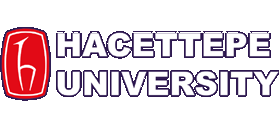ACADEMICS
Course Details
ELE636 - Detection and Estimation Theory
2025-2026 Fall term information
The course is not open this term
ELE636 - Detection and Estimation Theory
| Program | Theoretıcal hours | Practical hours | Local credit | ECTS credit |
| MS | 3 | 0 | 3 | 8 |
| Obligation | : | Elective |
| Prerequisite courses | : | - |
| Concurrent courses | : | - |
| Delivery modes | : | Face-to-Face |
| Learning and teaching strategies | : | Lecture, Question and Answer, Problem Solving |
| Course objective | : | The objective of the course is to provide a good understanding of detection and estimation theory which represents a combination of the classical techniques of statistical inference and the random process characterization of communication, radar, sonar, and other modern data processing systems |
| Learning outcomes | : | State Binary and M-ary Hypotheses Testing Evaluate the performance of decision making and estimation systems Derive Cramer-Rao bound Find the maximum likelihood, maximum a posteriori probability and least squares estimates of a parameter Perform Karhunen-Loeve expansion |
| Course content | : | Classical Detection and Estimation Theory : - Binary Hypothesis Testing - Optimum Decision Criteria : Bayes, Neyman-Pearson, Minimax - Decision Performance : Receiver Operating Characteristic - M-ary Hypotheses Testing Estimation Theory : - Random parameter estimation : MS, MAP estimators - Nonrandom and unknown parameter estimation : ML estimator - Cramer-Rao lower bound - Composite Hypotheses - The general Gaussian problem Representation of Random Processes: - Orthogonal representation of signals - Random process characterization - White noise processes Detection of continuous signals - Detection of known signals in white Gaussian noise |
| References | : | P. Moulin and V. Veeravalli. Statistical Inference for Engineers and Data Scientists. Cambridge: Cambridge University Press. 2018.; Van Trees, Detection, Estimation, and Modulation Theory, Part I, Wiley, 2001.; Shanmugan and Breipohl, Random Signals, Wiley, 1988. ; H.V. Poor, An Introduction to Signal Detection and Estimation, Springer, New York, 1994.; C.W. Helstrom, Elements of Signal Detection and Estimation, Prentice Hall, 1995. |
| Weeks | Topics |
|---|---|
| 1 | Binary Hypothesis Testing |
| 2 | Optimum Decision Criteria |
| 3 | Decision Performance |
| 4 | M-ary Hypotheses Testing |
| 5 | Random parameter estimation |
| 6 | Nonrandom parameter estimation |
| 7 | Cramer-Rao inequality |
| 8 | Composite Hypotheses |
| 9 | The general Gaussian problem |
| 10 | Midterm Exam |
| 11 | Orthogonal representation of signals |
| 12 | Representation of Random Processes |
| 13 | White noise processes |
| 14 | Detection of known signals in white Gaussian noise |
| 15 | Preparation Week for Final Exams |
| 16 | Final exam |
| Course activities | Number | Percentage |
|---|---|---|
| Attendance | 0 | 0 |
| Laboratory | 0 | 0 |
| Application | 0 | 0 |
| Field activities | 0 | 0 |
| Specific practical training | 0 | 0 |
| Assignments | 6 | 15 |
| Presentation | 0 | 0 |
| Project | 0 | 0 |
| Seminar | 0 | 0 |
| Quiz | 0 | 0 |
| Midterms | 1 | 40 |
| Final exam | 1 | 45 |
| Total | 100 | |
| Percentage of semester activities contributing grade success | 55 | |
| Percentage of final exam contributing grade success | 45 | |
| Total | 100 | |
| Course activities | Number | Duration (hours) | Total workload |
|---|---|---|---|
| Course Duration | 14 | 3 | 42 |
| Laboratory | 0 | 0 | 0 |
| Application | 0 | 0 | 0 |
| Specific practical training | 0 | 0 | 0 |
| Field activities | 0 | 0 | 0 |
| Study Hours Out of Class (Preliminary work, reinforcement, etc.) | 14 | 7 | 98 |
| Presentation / Seminar Preparation | 0 | 0 | 0 |
| Project | 0 | 0 | 0 |
| Homework assignment | 6 | 5 | 30 |
| Quiz | 0 | 0 | 0 |
| Midterms (Study duration) | 1 | 32 | 32 |
| Final Exam (Study duration) | 1 | 38 | 38 |
| Total workload | 36 | 85 | 240 |
| Key learning outcomes | Contribution level | |||||
|---|---|---|---|---|---|---|
| 1 | 2 | 3 | 4 | 5 | ||
| 1. | Has general and detailed knowledge in certain areas of Electrical and Electronics Engineering in addition to the required fundamental knowledge. | |||||
| 2. | Solves complex engineering problems which require high level of analysis and synthesis skills using theoretical and experimental knowledge in mathematics, sciences and Electrical and Electronics Engineering. | |||||
| 3. | Follows and interprets scientific literature and uses them efficiently for the solution of engineering problems. | |||||
| 4. | Designs and runs research projects, analyzes and interprets the results. | |||||
| 5. | Designs, plans, and manages high level research projects; leads multidiciplinary projects. | |||||
| 6. | Produces novel solutions for problems. | |||||
| 7. | Can analyze and interpret complex or missing data and use this skill in multidiciplinary projects. | |||||
| 8. | Follows technological developments, improves him/herself , easily adapts to new conditions. | |||||
| 9. | Is aware of ethical, social and environmental impacts of his/her work. | |||||
| 10. | Can present his/her ideas and works in written and oral form effectively; uses English effectively. | |||||
1: Lowest, 2: Low, 3: Average, 4: High, 5: Highest
